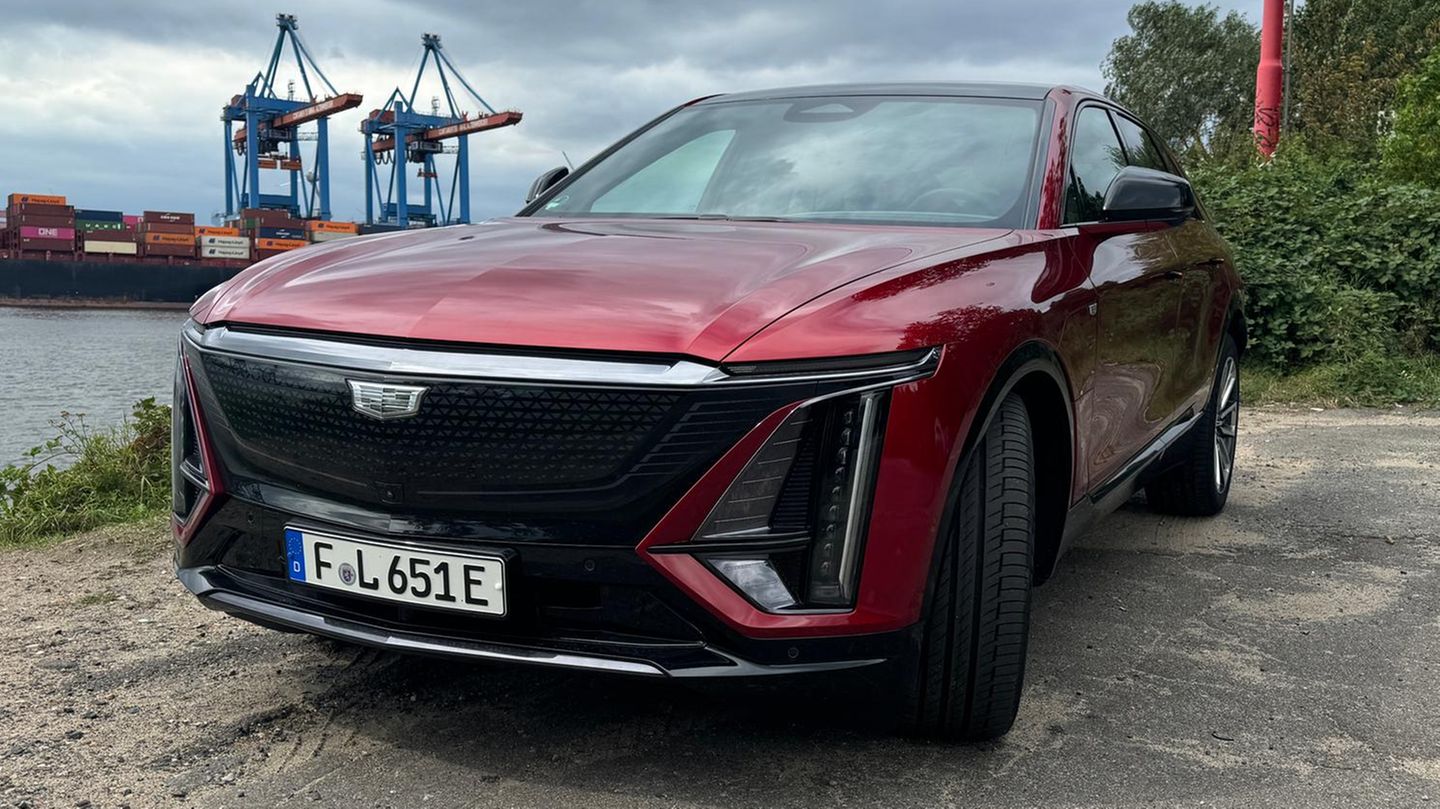General Motors is back on German roads with an electric car: The Americans are making a comeback with the SUV Cadillac Lyriq. One thing is certain: It will make a huge impression.
Seven years ago, the American car manufacturer General Motors (GM) left Europe. But the company had been toying with the idea of returning to the local market for some time. Now the time has come and the Cadillac Lyriq, the first comeback vehicle, is rolling back to Germany. When you look at the car, it’s easy to frown. Few people are probably waiting for another SUV. In this case, however, you can probably turn a blind eye, because Cadillac is a brand with a big presence.
The German version of the Lyriq is built in Spring Hill, Tennessee. At its core, the car is American through and through. You can tell this not only from its dimensions, but also from almost funny little things, such as the US socket in the back, which Cadillac will probably have to replace in customer vehicles. In the test car, it was of little use without a travel adapter.
In other respects, it’s almost a shame that General Motors didn’t just keep the American components. The EU version is missing a few things that make the car so popular in its home country. For example, there’s the driving assistant called “Super Cruise”, which makes driving down American highways much more pleasant. In Germany, all that remains is a cruise control with distance control.
The lighting of the Lyriq is similarly limited: while the American version has a fully illuminated “grille” that makes the car visually unique, Europeans have to do without this light show. In this country, people are much more restrained – as far as it is possible with such a huge car.
But what is left if you decide on the Cadillac Lyriq and are willing to pay the standard price of 80,500 euros? Standard price because both variants (Luxury AWD and Sport AWD) cost the same and there are only a few options for both models (trailer hitch and roof rack as well as leather and exterior color).
A featherweight weighing several tons
First of all, drivers can expect a rock-solid electric car with plenty of power. The engines produce a combined 528 hp and a torque of 610 Newton meters. This enables acceleration to 100 kilometers per hour in 5.3 seconds and a top speed of 216 km/h on the speedometer, after which it is limited. For a vehicle with an empty weight of 2.8 tons, this is quite impressive. However, the high weight is not to be applauded – the gross weight of 3.2 tons is reached extremely quickly and driving with a trailer is at least initially very limited with a normal driver’s license.
The good news: You don’t notice the weight of the Lyriq when driving. It is as light as a feather, almost typically American, so it is very comfortable and rather softly tuned. But the car doesn’t flounder, as you might be used to from US road cruisers. It is said that the chassis has been set up a little tighter for Europe – the current setting is certainly suitable for the Lyriq. The one-pedal operation with optional extreme recuperation is also well implemented. There is also a steering wheel rocker switch with which you can recuperate continuously and, after a bit of practice, you hardly have to press the brakes at all.
It is better not to drive fast in the car, because even in normal operation it uses a relatively high amount of power. Even though the battery capacity is an impressive 102 kilowatt hours, it is very difficult to travel more than 400 kilometers without stopping to recharge. In the test, the Lyriq’s consumption was around 25 kilowatt hours per 100 kilometers, although attention was paid to consumption, driving at a maximum of 130 km/h on the highway and mixing in a lot of city traffic with corresponding recuperation.
Charging technology not up to date
The Lyriq doesn’t cut the best figure at the fast charging station. The 400-volt system only allows the vehicle to charge at a maximum speed of around 190 kilowatt hours, but only for a very short time. The vehicle needs around half an hour to go from 10 to 80 percent – that’s average. The charging power at the AC station deserves praise, as it is 22 kilowatts and makes a huge difference, especially when doing a quick shopping trip or parking in the city. The charging port on the Lyriq is in front of the driver’s door, which makes parking in front of charging stations easier. But it’s not perfect, because with connections on the side of the road you inevitably end up standing on the road – and the plug protrudes sideways towards traffic.
In the Cadillac, the cables are stored under the trunk. The double floor offers enough space for this. And even if the Lyriq is not a pack mule par excellence, you can still fit a lot of things in. With the back seat in place, there is just under 800 liters of storage space; if you fold down the rear seats, it is 1722 liters. For some inexplicable reason, there is unfortunately no frunk, i.e. storage space under the huge hood.
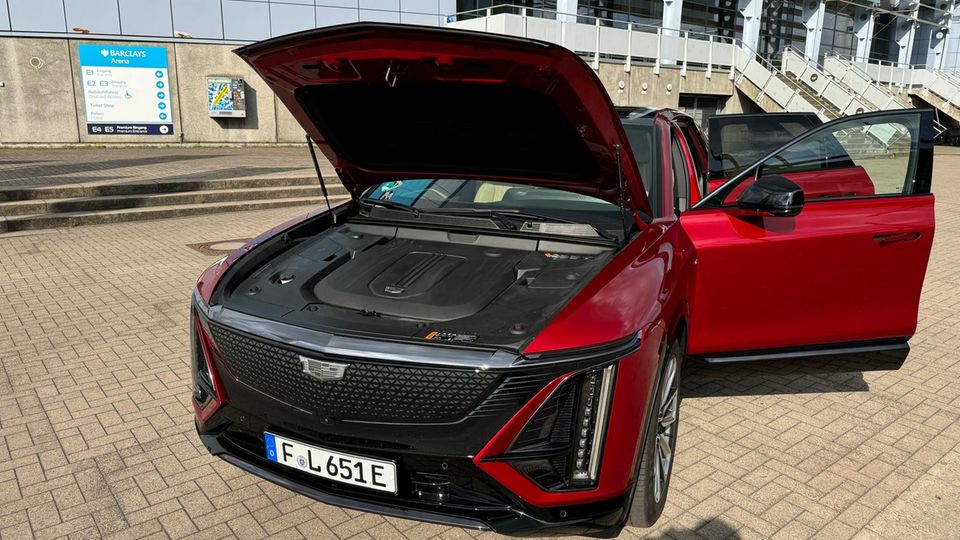
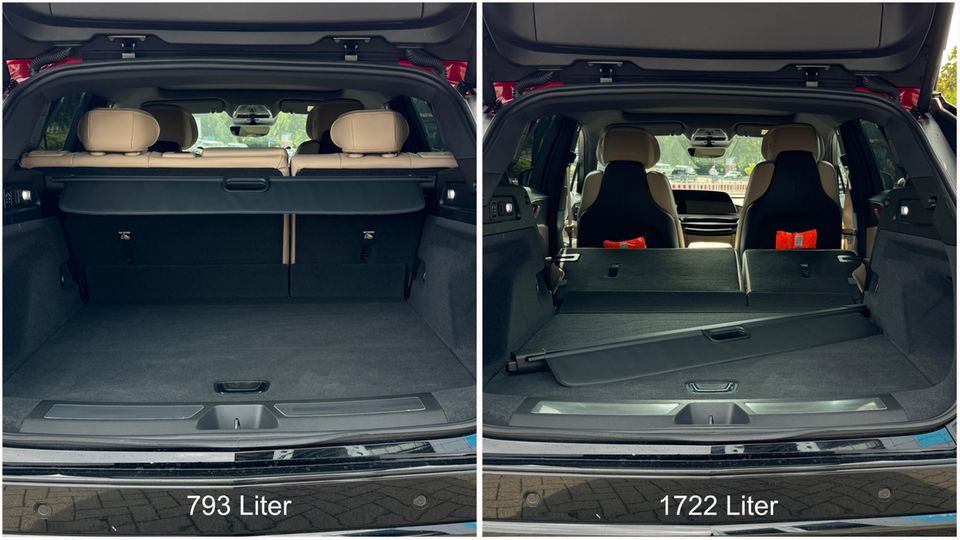
Anyone who is worried about not being able to maneuver the colossus safely from A to B will be pleased with the countless cameras on the car. Although the traditional shoulder look is certainly limited, the digital rear-view mirror or the display and the blind spot warning system help to avoid driving around anything. The Lyriq can park itself if desired, provided it correctly identifies the desired parking space. As standard, the Cadillac warns of obstacles by means of seat vibration. This takes some getting used to, but you quickly get the feel for it. If not, you can switch to the traditional beeping sound.
Welcome to the living room
Inside, the Cadillac is a living room on wheels. The seats are comfortable and closer to a wing chair than a racing seat. What the car lacks in lateral support is made up for with comfortable upholstery. There is also a – very subtle – massage function and the option of seat heating or cooling.
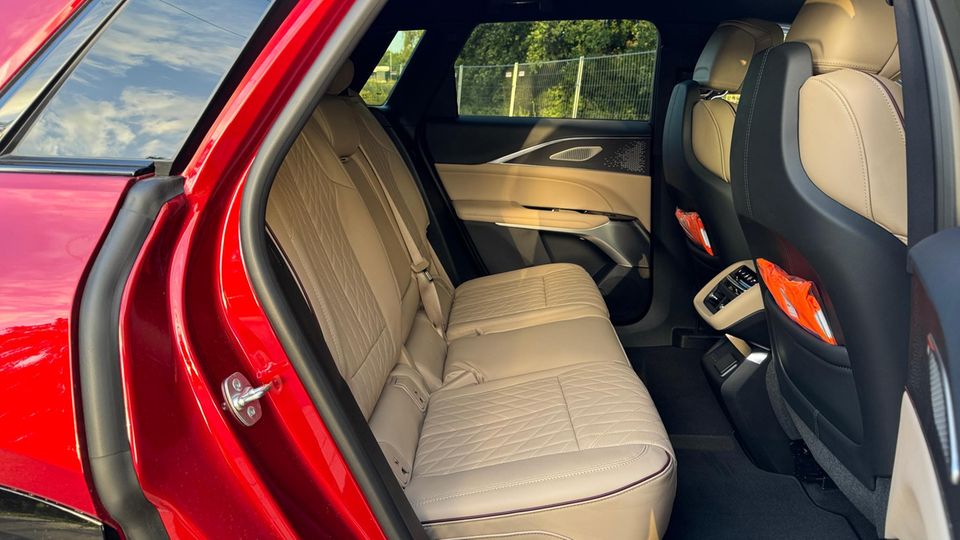
The large 33-inch display provides the driver with all the information they need about the journey. The vehicle uses a customized version of Google Maps as standard for navigation. The software, Android Automotive in this case, reacts extremely quickly and even offers an app store where you can download numerous programs after logging in to Google. And unlike navigation apps on your smartphone, the integrated software knows the charge level. This means it can show how much range you have left to reach your destination and also plan charging stops. This worked reliably in the test.
There are plenty of storage areas and compartments around the cockpit, and the music system is state of the art. Not only because the AKG speakers sound really good, but also because they offer a kind of noise suppression that dampens noise from outside. Together with the thick windows, this has an amazing effect: if you stand next to a construction site in the Cadillac Lyriq, you can’t hear it. As soon as you open the window, a crack literally appears in the noise barrier and you are overwhelmed by how loud it actually is “out there”. This kind of quiet was most recently noticed in the Rolls-Royce Spectre (find out more here). For stressed-out city dwellers, the interior of the Lyriq is a little oasis.
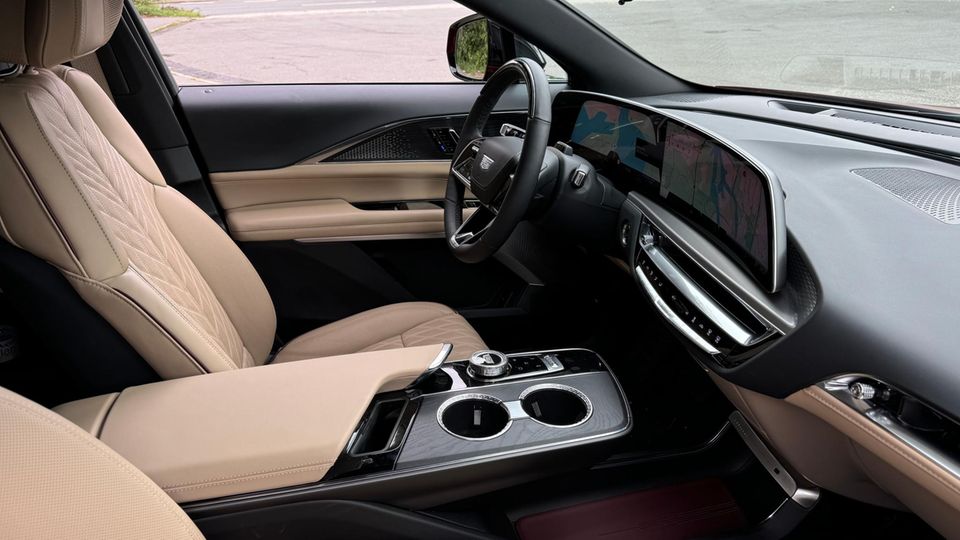
In its price range, you should expect flawless workmanship. The Lyriq largely lives up to this expectation, if you ignore the infamous “B-side”. All the surfaces that you see at first glance are really well made. There could have been a bit more wood and less piano lacquer, but overall GM has solved this well. But: if you touch less visible places, such as the underside of the center console, it creaks a lot. There are few places, but once you find them, you know they are there. The Lyriq would have benefited from a handful of better plastic panels here.
Conclusion Cadillac Lyriq: A nice car at a high price
The Cadillac Lyriq is so popular in the USA because, in its smallest configuration, it represents real competition to the popular Tesla Model Y. Cadillac’s US vehicles start at just $59,000, which is at least close to the Teslas. You do not have all-wheel drive and some amenities, but you get a lot of car for your money. In this scenario, creaky interior panels no longer play a major role.
In Germany, where the car costs at least 80,500 euros, the Lyriq is in a different league. The comparison with the Model Y therefore makes no sense in Europe. Rather, it is competing here with the BMW iX, the Kia EV9 (tested here) or a Mercedes-Benz EQE. This is tough competition from established brands whose reputation in these spheres simply has a different weighting than in the price ranges below. It remains to be seen whether Cadillac can score points with the Lyriq as a quasi-newcomer with the relevant customers.
More people could have been reached if, as in the USA, several variants and many more accessories had been included in the configurator and prices had started at around 60,000 euros – even if that is still a lot of money and would not have fulfilled the desire for affordable electric cars. It may be a question of time, but in the first steps the brand’s comeback seems rather timid and out of reach for many interested parties. Perhaps that will change with the Optiq, the next new launch for Europe.
In itself, the Lyriq is a good car with a few minor weaknesses that brings a little American flair to Germany. At least the Americans’ sense of space is something that hardly any other manufacturer can do better. If that is particularly important to you, you can perhaps overlook the advantages of the competition. Visually, it certainly stands out – even without the front lighting.
Source: Stern
I’m a recent graduate of the University of Missouri with a degree in journalism. I started working as a news reporter for 24 Hours World about two years ago, and I’ve been writing articles ever since. My main focus is automotive news, but I’ve also written about politics, lifestyle, and entertainment.

